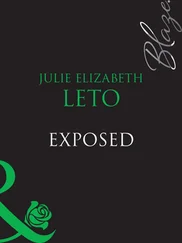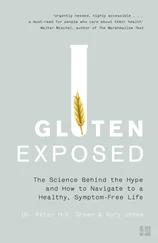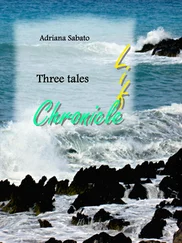See Ukrainskyi Blahodiinyi Soyuz Spilok Sotsial’noho Zakhystu Invalidiv Chornobylia 1994.
He headed a local facility for bone marrow transplantation and blood transfusion at the time of the disaster and was appointed deputy director of the center in 1986. Dr. Mudrak, the center’s manager, also attended the meeting. His main function at the meeting was to remind Lehkyi of the center’s needs. Mudrak added, “They are cutting off the food supply to forty of our leukemia patients, we need to pay our gas bill.”
This is of special interest in the current internationalization of human subjects research, where economic pressures can result in inadequate subject protection. My concern is with how a normative ethics of human subjects protection assumes variability across political-economic spheres; and with how ethics can be used to reify social and biological differences rather than to even the starting conditions in which research is done. See Petryna 2002.
For an illuminating treatment of tragic modes of emplotment, see White 1973:9.
Many workers at the Chernobyl plant were to be laid off owing to the plant’s closure in December 2000.
Her characterization harmonizes with Kharkhordin’s description of Soviet society as being governed by “mutual horizontal surveillance,” which ensured the dominance of the collective and the suppression of individual public disloyalty. “Through reinforcing images of a monolithic society a typical Soviet citizen persuaded himself that an individual deviant had no chances of survival” (1999:278).
To live in this social arrangement involved ambivalence. The Ukrainian word for ambivalence is dvoyeridnist ’, literally translated as, “two natures.” Ambivalence will be an important thematic undercurrent throughout this chapter. Sigmund Freud used the term to account for the emotional state of neurotics in clinical settings, a state characterized by simultaneous affirmation and negation of will (Laplanche and Pontalis 1973:214).
Thanks to Joseph Dumit for this phrasing.
Ceanu’s collaborators in the center’s experimental radiobiological division conducted analyses of rodent brains to show that large doses (up to 2 gray) did not influence the electrophysiology of brain cuts.
According to these researchers, contact with radiation leads to immediate injury that was “masked” and unregistered for five to six years after the disaster. A “pseudorecovery” and subsequent “decompensation” set in by 1991, when lesions and scars started to be registered in various exposed populations (Romodanov etal. 1994:78).
Ceanu’s researchers used control populations from state-designated “clean” territories within Ukraine, as well as from Kyiv.
He described it as an “extraordinary complex” that was very hard to resolve. Persons suffering from radiophobia, he argued, “do not believe anyone or anything.” They “connect the most trivial ailments with the effect of radioactive substances.” As a result, common illnesses become something more complicated and the person “does himself a terrible service” (Marples 1988:49).
Some Ukrainian state officials have used this view as an argument to stop costly resettlements of people living in state-designated contaminated zones.
Most research into long-term mental health effects has typically been based on self-reports and subjective scaling. Researchers use state-specified zone boundaries to demarcate experimental populations and rely on healthy populations living in “distant clean territories” as their control (Rumyantseva et al. 1996:529).
As we have seen in the case of Kyryl in chapter 5, such approaches also invited certain forms of political abuse.
According to Borovsky, controversy over the neuropsychiatric effects of ionizing radiation has lasted for the past 100 years. “Some authors object to the basic fact of the existence of the problem and say these effects do not exist below 20-60 gray. That debate isn’t yet decided: some researchers think there are effects below 1 gray, others think they start somewhere at 2-4 gray. The disagreement occurs not so much in the acknowledgment of the actual psycho-neurological symptoms, but in the attribution of the role of ionizing radiation to their origin.”
Borovsky also coordinates internationally sponsored research on radiation-related schizophrenia and schizophrenic spectrum disorders. He is developing a classification of mental disorders linked with Chernobyl and to be incorporated (and updated every two years) in the state administration of Chernobyl patients. A person subject to radiation, according to Borovsky, can experience a specific psychoneurological course, from neurosis-like and psychopathic-like disorders (cerebrasthenia), to psychosomatic disorders and encephalopathy, to organic personality development and endogenous-like organic processes.
Talal Asad critiques an anthropological thesis that ascribes the agency and creativity of non-European people to their being “local” in relation to a “world system” of cultural domination. “In a literal sense, of course, all people most of the time are ‘local’ in the sense of being locatable.” Saudi theologians “who invoke the authority of medieval Islamic texts are taken as local; Western writers who invoke the authority of modern secular literature claim they are universal [and] located in universes that have rules of inclusion and exclusion.” The difference is power and what Asad calls “the discursive definitions of authorized space” (1993:8).
Their circumstances, akin to what Allan Young notes in the context of PTSD research, permit them “to buy time for their findings—the time to work with them, time to mature them into facts through connecting them (via research technologies) to fact-rich sciences” (Young 1995:272).
Ukrainians were referred to as “little Russians” ( malorossy ) in the Russian czarist empire.
He switched to police work. I tried to contact him three times, and three times he hung up on me, leading me to believe that he had left the ward on bad terms.
A soroksotok is a typical parcel of land, forty meters in width and a hundred meters in length.
I checked his medical records afterward. They indicated that Pylypko “drove people out of the Zone during the disaster at Chernobyl.” He “complained of pains in the heart,” he “neither drank nor smoked,” and his “dose is unknown.”
This practice contrasts with the more well-known abuses aimed at political dissidents, who were often subjected to experimental drug treatments and tranquilization. See Reich 1999.
For a rich discussion of Pavlov’s laboratory culture, see Todes 1997.
Tolkach continued to reflect upon Freud’s absence from Soviet psychiatri c texts. “Freud writes about spiritual activity. But a Communist denies the very existence of the soul, there’s no god and there is no soul. The Communist has a materialistic outlook on the human. He is born, dies, and is buried, and doesn’t have an afterlife. For this reason, the theories of Pavlov had long-lasting interest.”
Читать дальше












